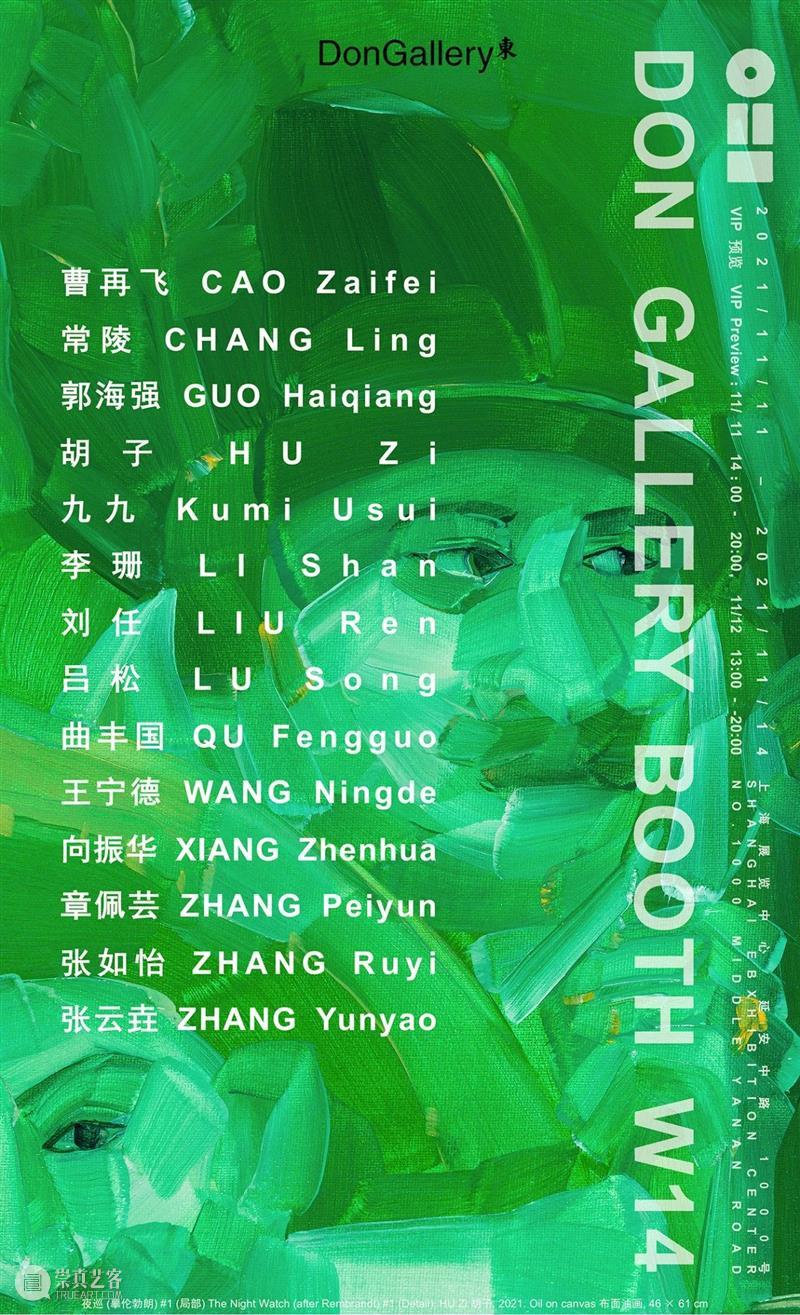
021 艺术博览会 | ART021 SHANGHAI
东画廊展位 W14 | Don Gallery Booth W14
参展艺术家 | Artists
曹再飞 CAO Zaifei、常陵 CHANG Ling
郭海强 GUO Haiqiang、胡子 HU Zi
九九 Kumi Usui、李珊 LI Shan
刘任 LIU Ren、吕松 LU Song
曲丰国 QU Fengguo、王宁德 WANG Ningde
向振华 XIANG Zhenhua、章佩芸 ZHANG Peiyun
张如怡 ZHANG Ruyi、张云垚 ZHANG Yunyao
藏家预览 | VIP Preview
2021/11/11 - 2021/11/12
公众开放 | Public Days
2021/11/13 - 2021/11/14
地址 Location:
上海展览中心 延安中路1000号
Shanghai Exhibition Center
No.1000 Middle Yanan Road
曹再飞 | CAO Zaifei
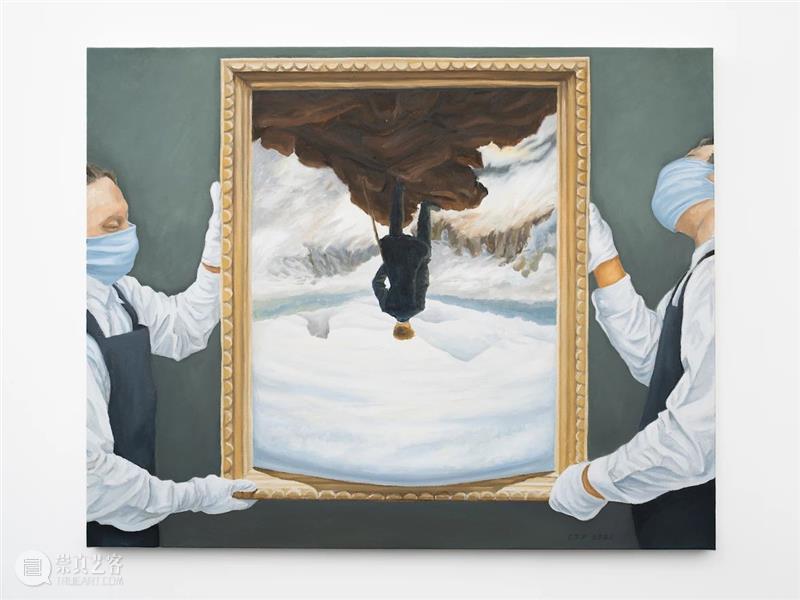
The Wanderer Above the Clouds 云端旅行者, CAO Zaifei 曹再飞, 2021. Oil on canvas 布面油画, 80 × 100 cm
向下滑动 Scroll down for more
曹再飞说:“生活中我是个简单随和的人,常常会迁就、妥协,甚至与世无争,但在艺术上喜欢自我死磕,甚至不在意他人的眼光。长期单兵作战,游离于各个圈层之外,形成了自己独特的视角与思考,既保持理性克制,又喜欢神秘主义,在正经与不正经之间寻找平衡。题材内容都是大家熟知的雕像、名画和日常事物,用一个不经意的动作改变了他们原有的含义,形成了我个人的语法。对我来说绘画语言越简单质朴越好,甚至夹杂着生硬、笨拙,有点范伟式的土味,并自带喜感。”
CAO Zaifei said, "In my life, I am a simple and easy-going person, often accommodating, compromising, and even incompetent with the world, but in art, I like to smash myself, and even don't care about the eyes of others. I have been fighting alone for a long time, free from all circles. Formed my own unique perspective and thinking, not only maintaining rational restraint, but also fond of mysticism, looking for a balance between seriousness and irregularity. The subject matter is all well-known statues, famous paintings and everyday things. With a casual movement, they changed their original meaning and formed my personal grammar. For me, the simpler and simpler the painting language is, the better, even mixed with blunt and clumsy, a bit of FanWei’s rustic humor style, and also with a sense of joy.”
常陵 | CHANG Ling
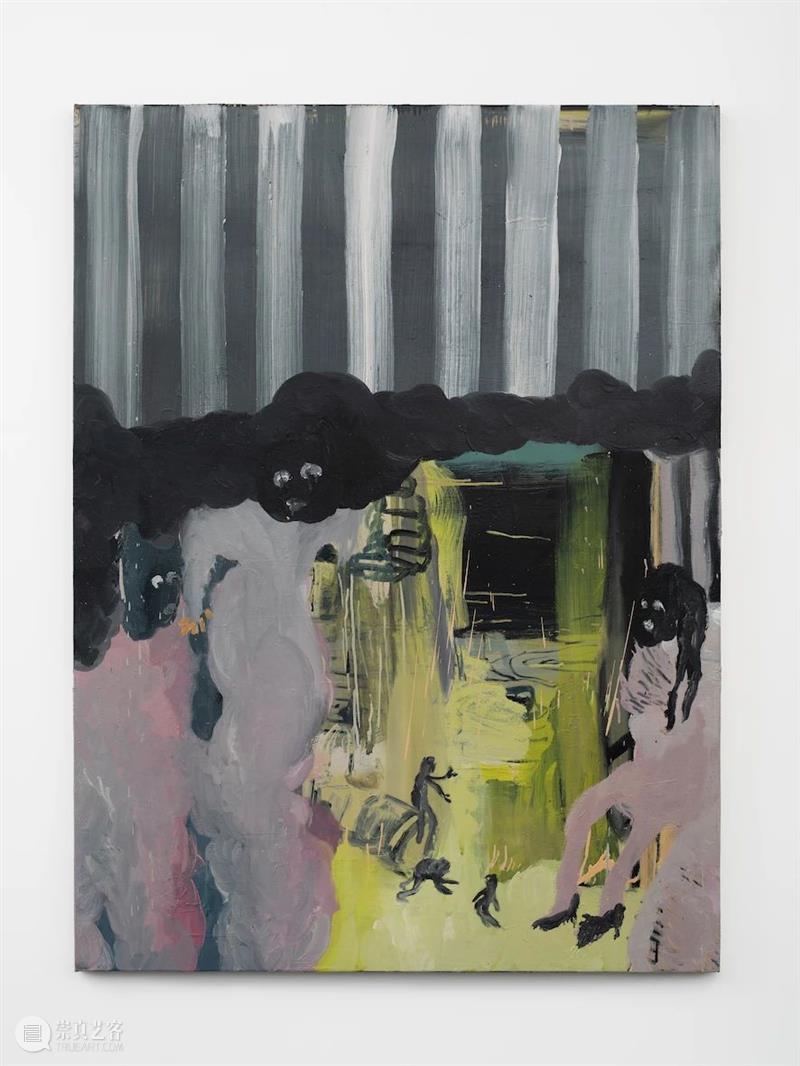
2012 Missile Vehicle 2021 导弹车, CHANG Ling 常陵, 2015. Oil on canvas 布面油画. 180 x 130 cm
向下滑动 Scroll down for more
该作品出自常陵《大玄玄社会》系列。“大玄玄社会” 延续了常陵对社会现实的关照,但这类现实更加内化而深入,是常陵用情感和记忆堆砌而成的时代幻像。在“大玄玄社会”系列的创作中,常陵提出并践行艺术的 “恰恰” 精神。他鼓励创作者摒弃逻辑的束缚,仅仅将作品看做是自身情感的流露和精神世界的外化。
This piece of work is from CHANG Ling’s Illusion Society series. Illusion Society is a continuation of CHANG Ling’s preoccupation with society’s realities, while also representing a deepening of exploration into such realities – an epochal illusion borne of CHANG Ling’s accumulated emotions and memories. Through the Illusion Society series, CHANG Ling raises and practices “precision” in art. He encourages creators to abandon the constraints of logic, to view art as an externalization of the spiritual and an unveiling of emotion.
郭海强 | GUO Haiqiang
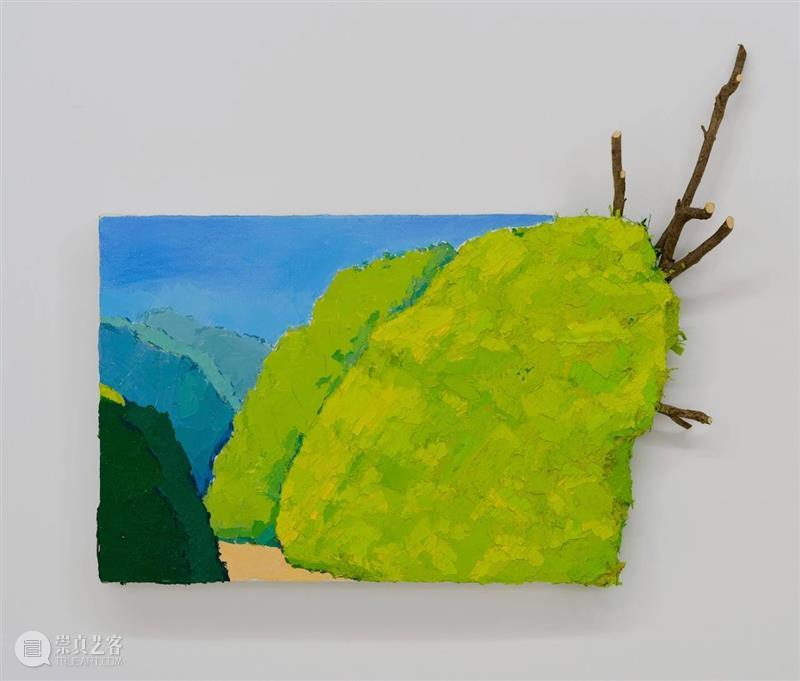
2021.4.5, GUO Haiqiang 郭海强, 2021. Oil on canvas, branch 布面油彩, 树枝, 58 × 70 cm
向下滑动 Scroll down for more
郭海强说:“我喜欢通过写生来锤炼绘画语言,雕塑经验的带入,让画面里散发出充沛的身体感和物质感。用最朴素直接的方式集中色彩和形状的凝聚,把传统手法和当代绘画意识融合。我一年四季在山中穿行,画春暖,画夏阳,画秋爽,画冬藏,日复一日,就像我父母一辈子在地里劳作一样。”
GUO Haiqiang said, “I like to temper the language of painting through sketching, and then by incorporating my experience with sculpture, the composition exudes a sense of body and material. In bringing together color and shape through this most humble and direct methods, traditional techniques are integrated with a contemporary understanding of painting. I pass through each season of the mountains, painting the warmth of spring, the summer sun, the chill of autumn, and the retiring winter. Day after day, I labor as my mother and father labored all their lives in the earth of those mountains.”
胡子 | HU Zi
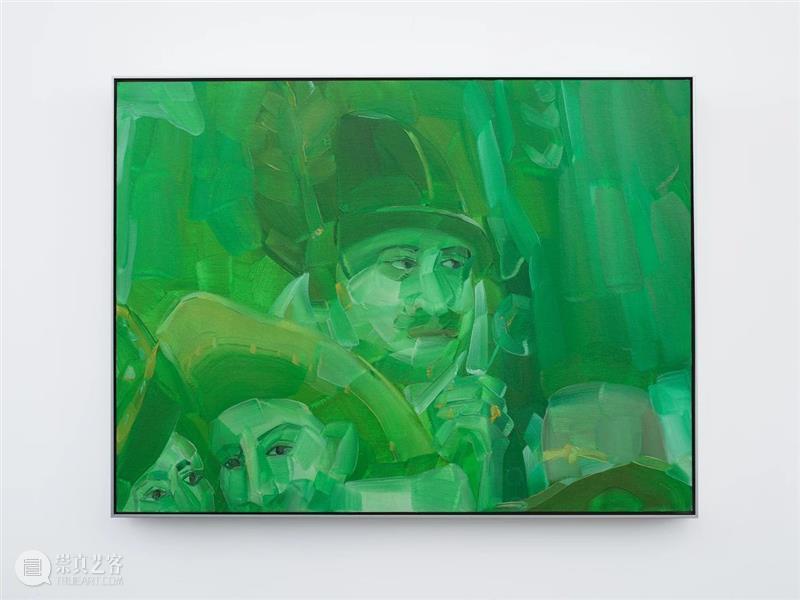
夜巡 (摹伦勃朗) #1 The Night Watch (after Rembrandt) #1, HU Zi 胡子, 2021. Oil on canvas 布面油画, 46 × 61 cm
向下滑动 Scroll down for more
“胡子画中的线条有棱有角,直来直去。画中人物的边缘轮廓粗钝差互,这种线条强化了画中人物个性的暗面。如果借用贡布里希 ‘图式与修正’(schema correction)的说法,那胡子对西方肖像画“图式”的重访,也即她以自己独特的视觉语言对其所作的 ‘修正’。贡布里希在《艺术与错觉》一书中写道:‘艺术家的创作不可能无中生有,但可以对前辈们评头画足。’ 这些自画像等待着后世艺术家的 ‘修正’,一如她‘修正’了十六十七世纪的这些历史肖像。光明与黑暗,昼与夜,阴与阳贯穿着人类的全部历史,也潜含于人类存在的本质,一同溶解在了胡子的暗面中”,Andy Cohen说。
“HU Zi’s lines are angular, and straight forward. The jagged-edged outlines of her subjects’ physical features reinforce the dark sides of their personalities. HU Zi’s renderings of these icons engage in a sort of ‘schema correction’ — to borrow a phrase from EH Gombrich--of western canonical images (the schema) that results in her own original, visual language (the correction). As Gombrich wrote in Art and Illusion, ‘The artist cannot start from scratch, but he can criticize his forerunners.’ HU Zi leaves plenty in her self-portrait for future artists to ‘correct’, as well as in her rectified portraits of historical icons from the 16th and 17th centuries. Light and darkness are as common to every period of human history as they are to each day and night — the Yin to the Yang. HU Zi’s latest body of work embraces the underlying bipolar nature of human existence as well as society’s need to whitewash its dark side. ” (Andy Cohen)
九九 | Kumi Usui
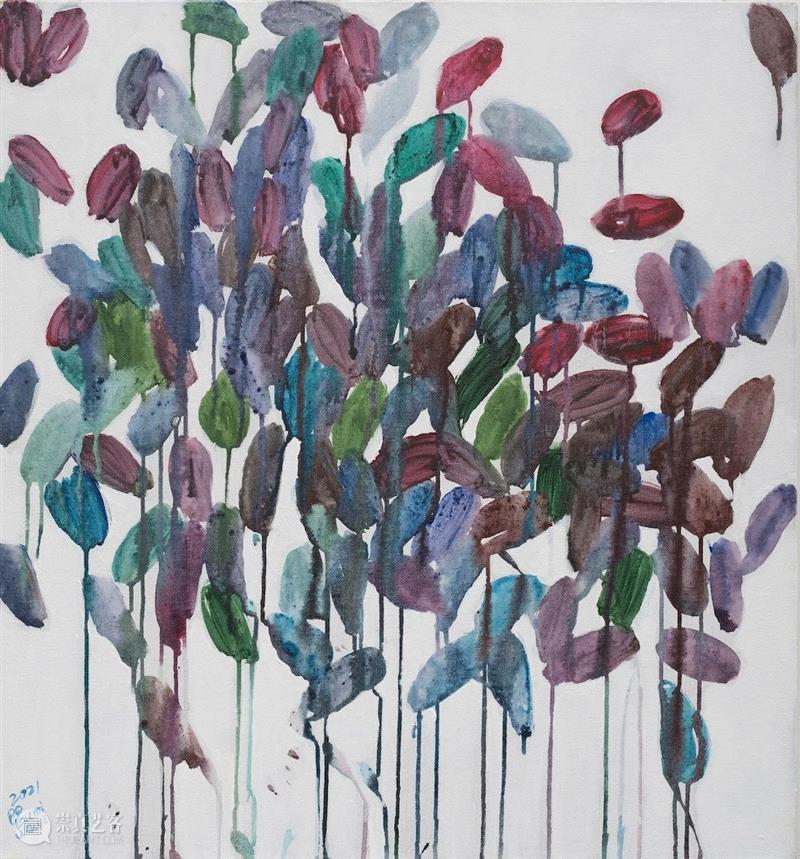
Drawing & Drawing (on canvas) 2021 #18 埋头画画 (布面) 2021 #18, Kumi Usui 九九, 2021. Acrylic on canvas 布面丙烯, 70 × 65 cm
向下滑动 Scroll down for more
九九的创作主要涉及纸本丙烯、综合材料绘画及装置。其创作观念及创作实践围绕日常生活与情感展开,并在《埋头画画》系列作品中尝试模糊生命与绘画的边界,试图回到绘画的本质状态进行无目的性的绘画,审问绘画本身的意义、生活的意义与自我的意义。
Kumi Usui’s work involves acrylic on paper, painting with mixed media, and installation. Her conceptual practice centres on everyday life and emotions. In the series of I’m Drawing & Drawing, she tries to return to the pure state by blurring the boundary between art and life when creating aimless paintings, questioning the meaning of drawing, the truth of life, and the connotation of self.
李珊 | LI Shan
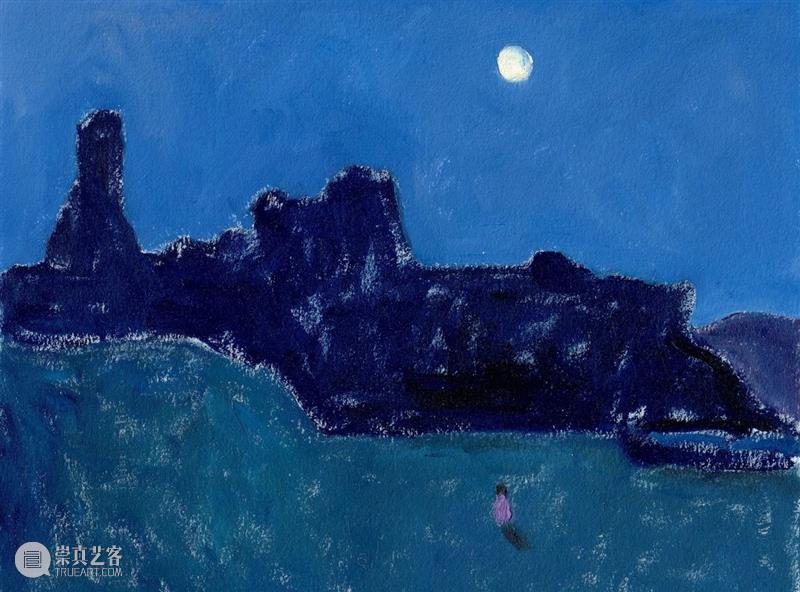
Somnambulating at Ruins of Gaochang (Turpan) 梦游高昌故城 (吐鲁番), LI Shan 李珊, 2021. Oil on paper 纸上油画, 22.5 × 28 cm
向下滑动 Scroll down for more
李珊以“非官方”艺术家的身份参加了“无名画会”在1974年的地下展览及1979年相对开放的公共展览,在这一时期创作中,树木、花卉与景观是艺术家始终掌握的母题;高洁的梅花与清雅的菊花都是艺术家的个人肖像,反映着艺术家自己的心理现实。而在最近新作中画面出现的场景多半来自艺术家在世界各地的遨游,而这些新作相较于七十年代的写生在色彩上更加明快鲜亮且都保留着其她娴熟入微的独特笔触。
As an ‘unofficial’ artist, LI Shan joined the underground exhibition of the painting society in 1974 and, later on, in 1979 a less clandestine, more openly public exhibition as a relatively relaxed political atmosphere began to emerge after the Cultural Revolution. Trees, flowering plants, and the landscape are among the motifs which the artist has long embraced; the elegant plum blossom or noble chrysanthemum as personal portraits or reflections on the artist’s own psychological reality. In the recent paintings of LI Shan, many of the compositions and scenes derive from the artist’s extensive travels abroad. Tranquil landscapes contrast the hustle and bustle of city life. Compared to her earlier works from the 1970s, the palette of LI Shan’s new paintings is brighter while retaining the nuanced singularity of her brushwork.
刘任 | LIU Ren
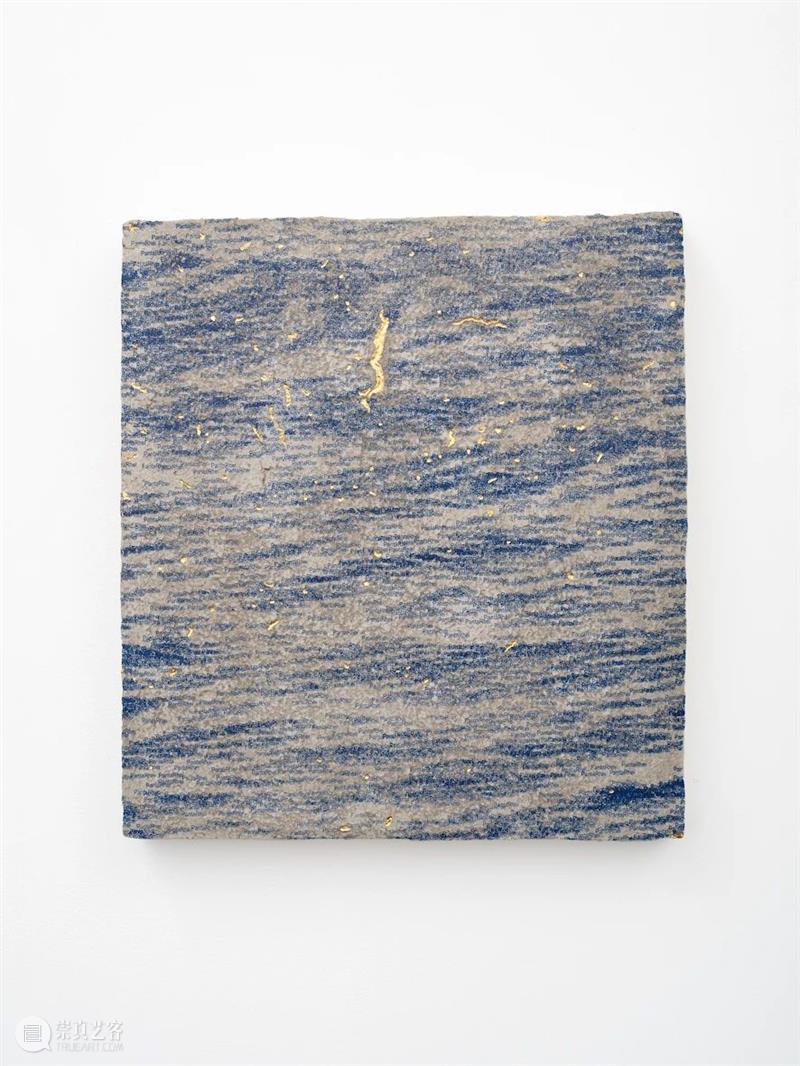
Panta Rhei-202110131450, LIU Ren 刘任, 2021. Silk screening on straw paper, gold foil 丝网草纸, 金箔, 40.5 × 36.5 × 4 cm
向下滑动 Scroll down for more
在这个系列中,刘任将草纸打成纸浆再重新塑形成厚如砖块的纸砖,当表面被压平与晾干后,再用丝网印刷的方式把颜色深浅不一的“Panta Rhei”字样描摹成海浪起伏的视觉形态,并且最终用金箔嵌入纸砖自然风干过程遗留下的裂隙。刘任动用众多反差性对峙的元素。譬如在直观的视觉感受上,用干枯的草纸去表现潮湿的洋流;在物质形态上,则是作为廉价快消品的草纸被转译为试图指向永恒的艺术品;而在至关重要的主题学范畴内,则是凝固的海与绵延的时间所形成的、互为隐喻的关系。
LIU Ren uses roughly textured straw toilet paper to create a mulch, and then presses the mulch into bricks of paper. After preparing a flat and dry surface on the straw paper bricks, LIU screen prints the words “Panta Rhei” in various shades to evoke the visual form of undulating waves. Lastly, he uses gold leaf to limn the cracks in the paper bricks which are left behind by the air-drying process. In terms of form, this process is like yet unlike painting. In this series, LIU often places elements in direct confrontation with each other. Visually speaking, dry paper is used to evoke the liquid currents of the ocean. While straw toilet paper -- one of the cheapest and most disposable consumer products -- is the chief material used in a work of art which strives at timelessness. In the crucial category of thematics, we find contrast in the mutually metaphorical relationship between the solidified sea and elongated time.
吕松 | LU Song
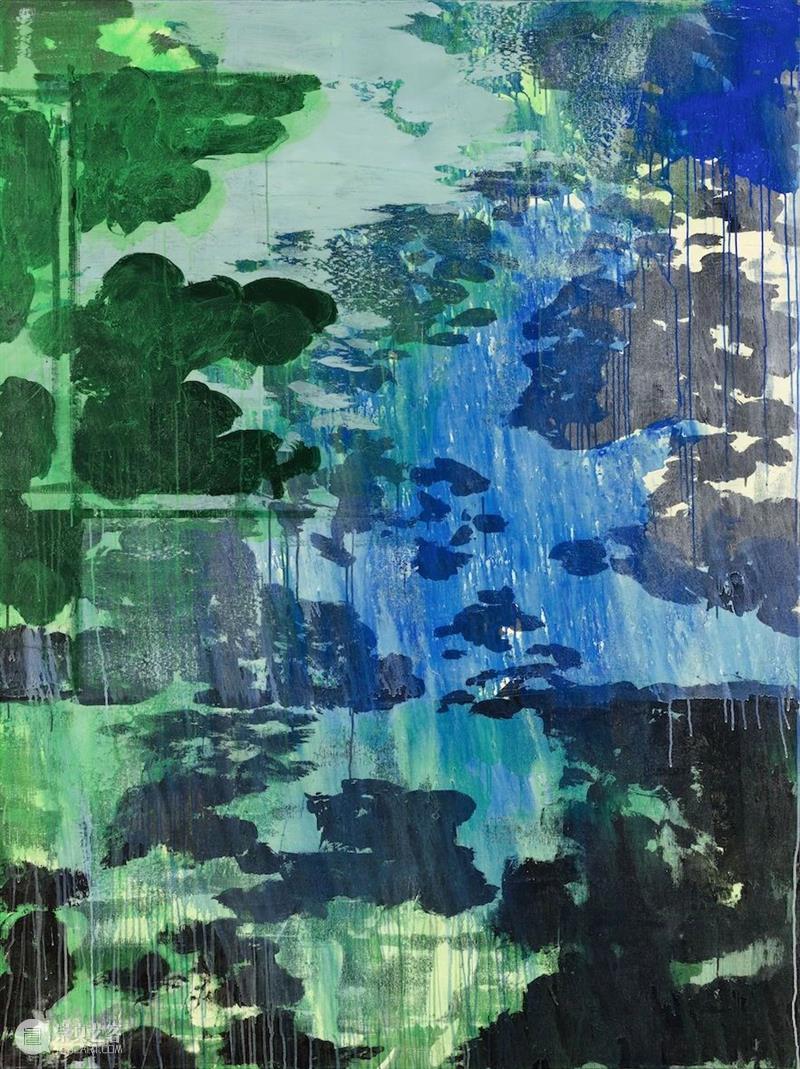
Japanese Garden #9 日本花园 #9, LU Song 吕松, 2020. Acrylic on canvas 布面丙烯, 200 × 150 cm
向下滑动 Scroll down for more
“让人感兴趣的是吕松的追逐,他在画面上捕捉、寻找、构建。观众的视线被他牵引着,寻觅着,他制造着他心中的‘Lead’(引桥,视觉上在画面上的第一眼就可以看见之物),每一次的制造必然导致画面向不同的方向游走。尽管所有的‘日本花园’都源自一张已经折旧甚至有些模糊的照片,但每一次的画面上,吕松都构建了一个全新的‘日本花园’。”
“每一次他的描绘、他的进入、他的构建,都是由那一刻的状态、情绪和画布对自己的回应来决定下一步在哪里,下一步去哪里。吕松追逐着画笔,画笔建构着故事线,每一幅画面都是对观众的邀请,每一幅《日本花园》,都是一次在日本花园中的心灵狂奔和追逐,视线追逐着情绪,就像观众追逐着演员……对吕松而言,《日本花园》的创作过程,他没有剧本,每一次展开新的画面,都是一次新的追逐,都是一个故事线的全新创造,也可能是一场精疲力竭的迷宫游戏。这让他兴奋,因为结果未知。”
摘选自沈奇岚《吕松的日本花园和礼拜五的荒岛》
"What’s interesting is LU’s pursuit. He chases, seeks, and builds on the canvas. He lures the viewer’s gaze, he seeks it. He builds the 'lead' in his mind’s eye -- the component that captures the viewer’s eyes at once. Every painting leads the viewer’s eye down a different path. Though every painting in the Japanese Garden series is based on the same blurred and wrinkled photograph, every time LU paints that photograph, he constructs a wholly new 'Japanese garden'."
"Each time, his depiction, his lead, his construction -- they all originate from singular moments in which his mental state, mood, and the way the canvas is responding determine his next steps and the steps after that. LU chases the paintbrush, the paintbrush constructs the storyline. Every image is an invitation, every Japanese Garden is a jaunt through the garden. The gaze follows the mood, just as the audience follows the actor...... LU had no script in the creation of Japanese Garden. Each new painting was a brand new chase, and a brand new storyline -- a most exhausting labyrinth. This is what excites him -- the unknown conclusion."
Adapted from “LU Song’s Japanese Garden and Friday’s Desert Island” by SHEN Qilan
曲丰国 | QU Fengguo
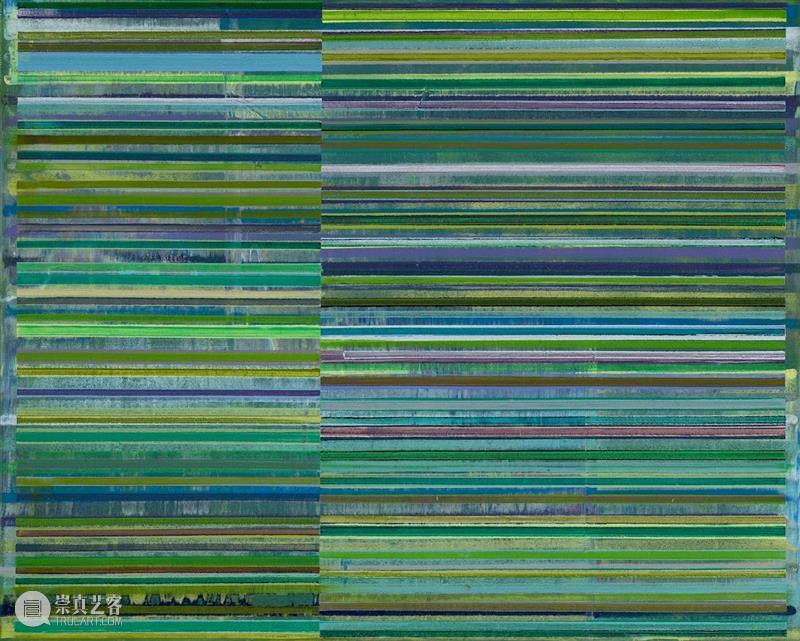
Spring Commences, Four Seasons 四季 立春, QU Fengguo 曲丰国, 2020. Oil on canvas 布面油画, 80 × 100 cm
向下滑动 Scroll down for more
曲丰国的“四季”系列始于一种与“物哀”同工的审美意识,是艺术家对作为自然物的季节所带来的无常感与极致情绪的不自觉捕捉,情不自禁地从变幻流转的外界事物中获得了幽深玄静的洞察与身体力行的共振,仿佛将人与物之间的距离扩张成转瞬的间期。抽象作为惯习得以出现,而非基于场景的摹本。虽然在近阶段的“四季”中,分割的叠加与叠加的分割作为结构要素在画面中央占据了不少几何母题,但曲丰国创作语言的核心是空间与空间性的消失。
“Four Seasons” by QU Fengguo stems from a sense of aesthetic judgment analogous to “mono- no-aware.” It is the unconscious capture of impermanence and ultimate emotions brought by the seasons as a natural kind. Seized with a sudden impulse and all the patience, the artist obtains extraordinarily deep insight and empathy into external objects that are changeable and unpredictable, as though the distance between persons and things is expanded into a fleeting moment. Abstraction is practiced as a habitus but not a scenario-based transcription in his composition. Though in recent practice of this series, the superposition of division and the division of superposition functions as a structural element occupying the very center of the image. A number of geometric motifs emerge, but the core of QU’s creative language is the disappearance of space and spatiality.
王宁德 | WANG Ningde
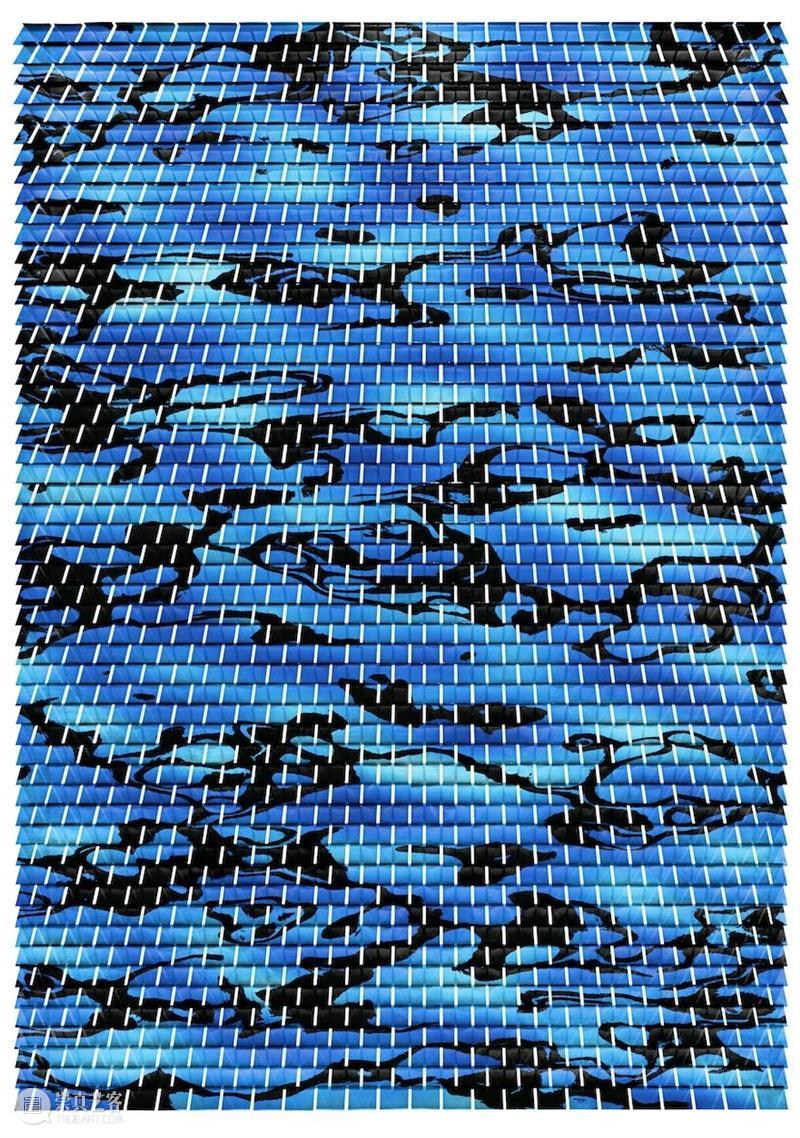
Form of Light Water Ripples #30 有形之光 水纹 #30, WANG Ningde 王宁德, 2016. Honeycomb aluminum panel, acrylic, clear lightbox sheet 蜂窝铝板, 亚克力, 透明灯箱片, 198 × 141.4 × 6 cm. Ed 1/3
向下滑动 Scroll down for more
“有形之光”是将一张完整的照片分割、计算、压缩和裁切,直立之后碎片的影子叠加还原成一张完整照片的影子图像,这个动作过程至关重要,所以也可以把它看成是一种过程的记录结果,它让我们联想到今天“碎片化”的生活和图景。一幅照片里拍摄的无论是什么,终究只是一些光化反应,即使你相信它是可以替代对象本身,那个对象也已经不存在,或者改变了。王宁德的作品向观众呈现图像的同时,提示自身的虚幻,质疑我们对世界认知的正确性。
WANG Ningde uses photographic processes without creating photographs by definition. The effect is closer to that of a camera obscura, an image or representation of reality hovering over reality itself. Furthermore, the gridded images, composed of hundreds of units, subvert the tendency of traditional photography towards the lone cropped image which we refer to as a photograph. WANG's method of composing these works eschews the chemical process of fixing an image to a surface, relying instead on an organized fragmentation of a singular image on a series of transparencies, which when exposed to a specific lighting, creates a composite shadow image. The end result is the artist quite literally drawing with light, creating ghostly images through a process that relies on both computers and the human hand.
向振华 | XIANG Zhenhua
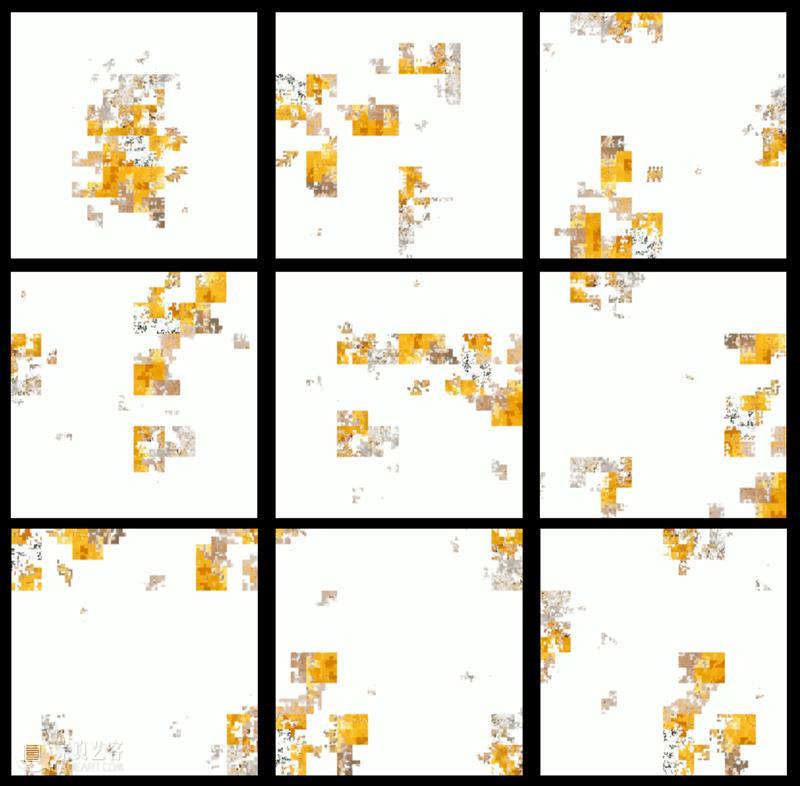
Catalogue-CN05, XIANG Zhenhua 向振华, 2021. Digital Programming, video, 数码编程, 录像, 12:8'10'', 12小时8分钟10秒, dimensions variable 尺寸不定, loop 循环播放, 1Ed+1AP
向下滑动 Scroll down for more
在屏幕里面的图像被海量生产、更新,最后淹没在新的图像里。作为观看者,我们主动或者被动地选择出现在眼前的图像,并读取出这些图像里的准确信息。如果不能,就会选择快速划过。图像模拟现实相对稳定的形态。准确可被获取的具象含义在运动介入时又立即消失在规定的尺寸里,而这些尺寸成为容器,里面看似混乱游走的“元素”被看到的当下并不能再给出任何的具体含义,在时间和空间上,定义的坐标不同,宏观的“像”和微观的“素”从“可⻅”变为“不可⻅”,但都会再次读取,产生新的认知。
“像”是“素”在一个时间节点的汇合,一张⻓宽比例固定的画面里,构成“像“的便是这些“素”,往往我们看到的是最后成像的结果,其中有一个运行的规则,一旦运行,时间会介入,那么像素就如同鲜活的生命体,在这空间里面产生运动,时间也能变成可被感知的“像”的一种,那么元素、规则、时间、空间在一个浓缩的体系下运行的时候,我们所能感知的是否就也能超越“像”本身所给出信息意义? 像”是“机缘”,所有看似混乱的元素从抽象到具象再到抽象,从不可认知到可以识别,我们往往识别的是通过这个机缘运行而固定下来的某一帧画面,但在这之前所运行的成千上万步的过程和轨迹并不一定能够让我们清晰地看到这个机缘是按照怎样的规则进行,而恰巧能被显影在眼前的准确的“像”是在规则的运行下所有元素的集合,当然也包括出现在这“像”面前的观看者。
“像”是结果,在我们面对一张已然成像的画面,我们能清楚的感知到面前这个像所具体给出的内容,是人物、是⻛景、还是静物?是文字、是商标、还是图案?都能够迅速在脑海读取出“像”给出的信息,那么如果是结果的话,所有出现在我们周围能够被我们所感知的都可以看作是这个结果。我选择在日常生活中最熟悉的图像符号,在程序给予的规则中迅速地运行成不能被识别的连续画面,那么在我们眼前出现的世界连同在这个世界里面出现的“我们”也当然只是在这一刻形成的时候短暂被我们识别成了眼前的“像”,不过,转瞬即逝。
The images on the screen are mass-produced, updated, and finally submerged in new images. As viewers, we actively or passively select the images that appear in front of our eyes and comprehend the accurate information in these images. If not, we choose to scroll quickly. The image simulates the relatively stable form of reality. The precise and available concrete meaning disappears in the prescribed size, the image in pixels, immediately when the movement is involved. The size of these prescribed images become containers, and the “elements” that seem to wander in chaos can no longer be given any specific meaning when they are seen. In terms of time and space, the defined coordinates are different; the macroscopic "image" and the microscopic "elements" change from "visible" to "invisible", but they will be reread and produce new cognitions.
"Image" is the confluence of “pixels” at a time node. In an image with a fixed aspect ratio, these “pixels” form the "image". Often, what we see is the result of the imaging process. There is a rule of operation: once it runs, time will intervene. Then the “pixels” are like living organisms, producing movement in this space. Time can also become a kind of "image" that can be perceived. When the elements, rules, time, and space are operating under a condensed system, can what we perceive also surpass the meaning of the information given by the "image" itself? The “image” is "the rules by which things work". All seemingly chaotic “elements” go from abstract to concrete, then abstract, from unrecognizable to recognizable. What we often recognize is a specific frame fixed by these rules. But the thousands of steps and trajectories that have been run before does not allow us to see the rules. And the accurate "image" that happens to be visible in front of us is the collection of all the “elements” under the operation of the rules. Of course, it also includes the viewers in front of the "image".
"Image" is the result. When we face an image that has already been imaged, we can clearly perceive the specific content given by the image in front of us. Is it a figure, a scene, or a still life? Is it words, trademarks, or patterns? We can read the information given by the "image" in our minds immediately, so if it is the result, everything that appears around us that we can perceive can be regarded as this result. I choose the most familiar image symbols in daily life. These images quickly run into unrecognizable continuous pictures in the rules given by the program. Then the world that appears before our eyes and the "we" that appear in this world are, of course, recognized as the "image" only when this moment was formed in front of us. However, it is fleeting.
章佩芸 | ZHANG Peiyun
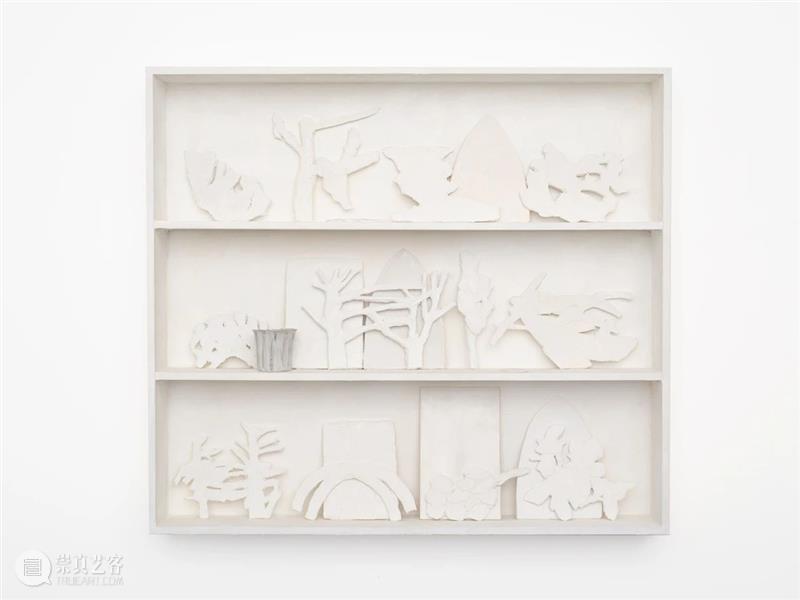
In The Garden #4 在园中 #4, ZHANG Peiyun 章佩芸, 2021. White clay, wood, gesso 白泥, 木, 绘画底料, 101.5 × 113.5 × 17 cm
向下滑动 Scroll down for more
章佩芸的作品从起初对光影的寓意理解、对自然的观看和复调式的模仿,逐渐形成以自然界和艺术历史为资源参照的或抽象或具象的绘画群像。在创作中,她并不拘泥于其中任何一种知识型的单一立场。在她看来,不同时代的秩序感本身构成的是不同类型的知识,而对任何秩序感的感知必然是基于爱。绘画中真正重要的东西,并非秩序感所代表的理性,而是艺术家和观众如何感性地表达与感受着那种被归类为理性的秩序感。
From the initial understanding of the meaning of light and shadow, the viewing of nature and polyphonic imitation, ZHANG Peiyun's works gradually form a group of abstract and figurative images with reference to nature and art history. ZHANG does not stick to any single intellectual position. In her view, the sense of order in different eras constitutes different types of knowledge, and the perception of a distinct sense of order must be based on love. What is essential in painting is not the rationality represented by the sense of order but how the artist and the audience perceptually express and experience the sense of order classified as rational.
张如怡 | ZHANG Ruyi
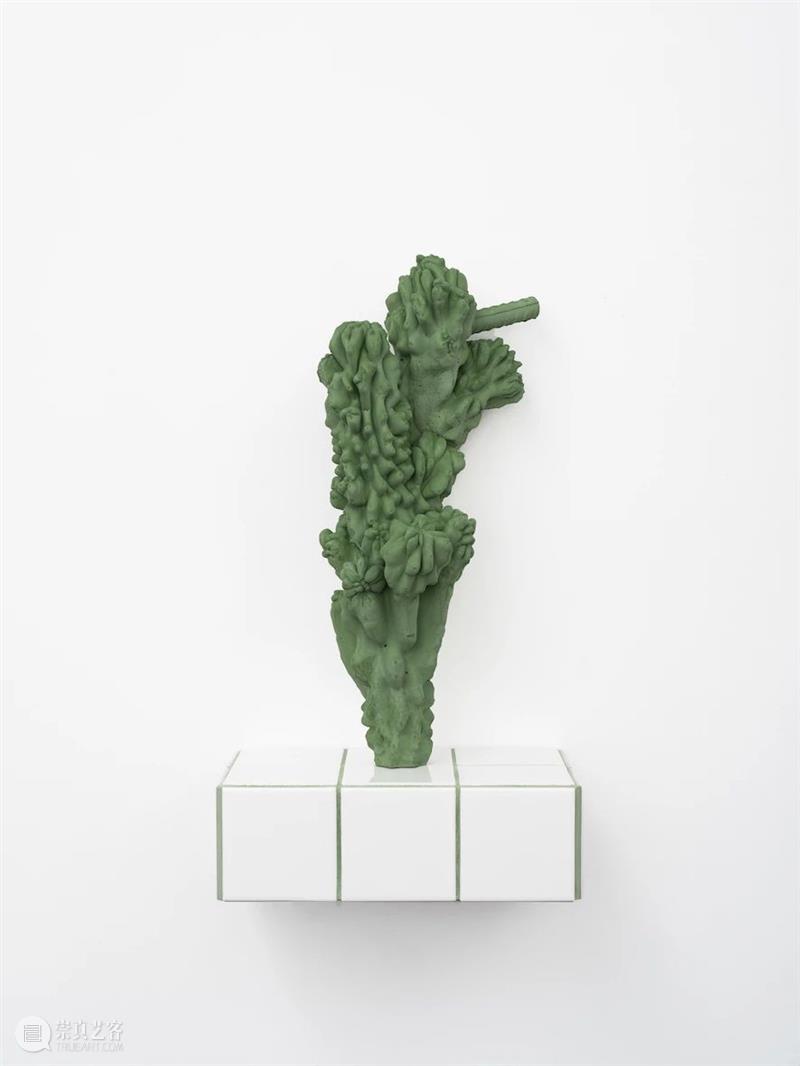
Individual Plant-UG 一株-UG, ZHNAG Ruyi 张如怡, 2021. Concrete, pigment, ceramic tiles, wood panel, metal 混凝土, 色粉, 瓷砖, 木板, 金属, 53 × 30 × 20 cm
向下滑动 Scroll down for more
一颗由混凝土浇筑的异形仙人掌坐落在瓷砖覆盖的底座上,像是被驯化的植物标本。这件雕塑继承了艺术家在早期纸本创作中关于天然物受到环境规训的思考。张如怡的雕塑和装置从日常生活中的物品和材料汲取灵感,参考它们面临着变化的环境表现出的力量和脆弱性。她在城市拆迁的废墟中采集碎石,这些现实之下的人造粗石,质感粗旷、颜色灰暗,却拥有独特的厚重感,仿佛是见证时代变迁的“化石”。
A dysmorphic cacti made out of concrete is situated on a tiled pedestal, petrified as a plant specimen. The sculpture is carrying forward the artist’s thinking upon natural objects being disciplined by the environment in her early paper works. ZHANG Ruyi draw on materials and objects from daily life, referencing their simultaneous strength and vulnerability in the face of a changing environment. She collects rubble in the ruins of urban demolition, under the reality, these artificial rough stones have rough texture, dark colour, but unique sense of weight, they were “fossils” witnessing the changes of The Times.
张云垚 | ZHANG Yunyao
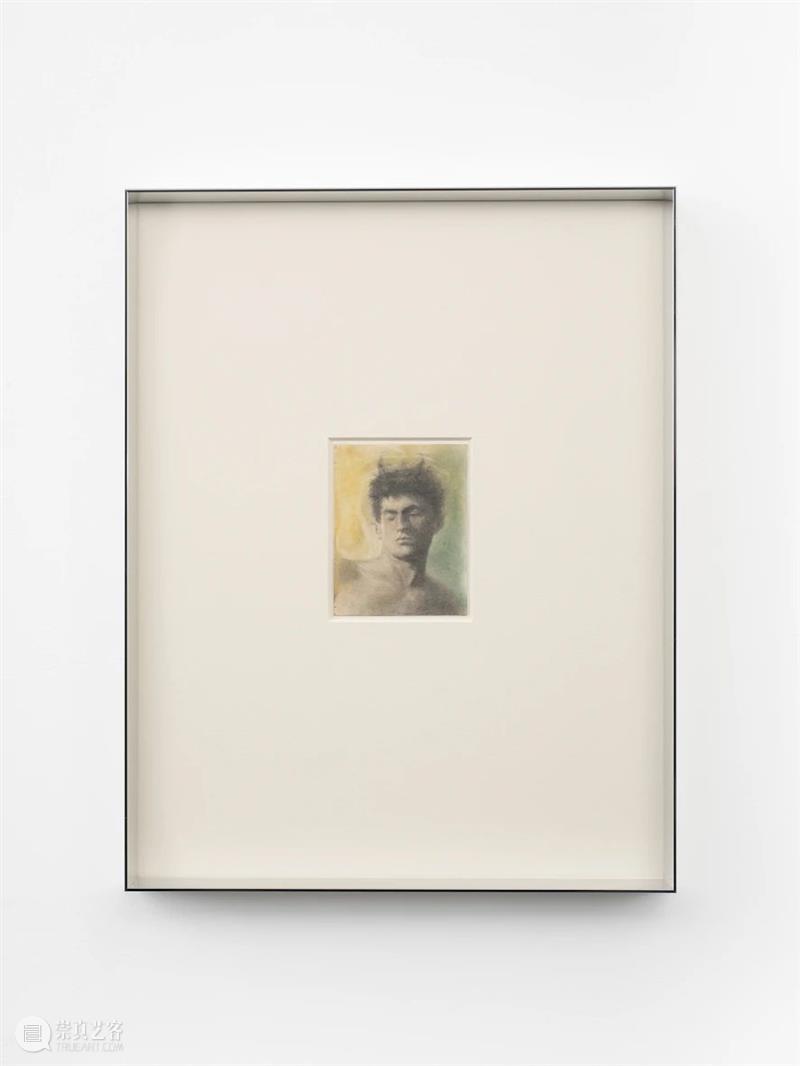
Study for A Portrait 肖像习作, ZHANG Yunyao 张云垚, 2020. Graphite and pastel on paper 纸上石墨色粉, 9 × 7 cm
向下滑动 Scroll down for more
张云垚说:“这一批肖像作品是在2020年4月初开始着手创作的。我清楚得记得当时我在巴黎处于一种不安和孤独的状态下,当时我所住的公寓不大,没有合适的环境进行创作,于是因地制宜的概念就应运而生了,我开始有计划的累积各种从超市买来的日常生活用品的外包装,并且在住处附近的Monoprix超市买到了彩色铅笔,也就是这些简单而不能再简单的材料促成了这批肖像画的诞生。这批纸上的素描作品,是有关“暧昧,乌托邦幻想以及性别模糊”的。我必须承认在隔离之前,行走在巴黎的地铁或者大街上,有很多美丽俊俏的脸庞使我印象深刻,通过观察他们让我累计了很多视觉印象,这些印象诱发了我通过简单的素描手法去表达。因此我挪用了19世纪末的20世纪初的黑白浪漫主义情色人体摄影,在我看来,这些人体摄影所营造的氛围(南欧洲被地中海温暖的阳光包围的岛屿)使我产生了很强的共鸣,我用手绘的方式将这些漂亮的人体、肖像和风景赋予色彩。这些肖像和人体素描被我抹去了时间背景,所以在去年年初这个特殊的时间点上,这些特殊的纸上作品承载着我在巴黎的感触。”
Study for A Portrait series started in early April 2020. ZHANG Yunyao said that I clearly remember that I was in a state of anxiety and loneliness in Paris. At that time, the apartment I lived in was not big enough. There was no suitable environment for my creation, so the concept of adapting to local conditions came into my mind. I began to collect the packaging of various daily necessities bought from the supermarket, and coloured pencils were purchased at the Monoprix supermarket near where I lived. These are the materials that contributed to the birth of this series. These sketches on paper are about "ambiguity, utopian fantasy and gender ambiguity." I must admit that before the pandemic, I was impressed by many beautiful and handsome faces when I was walking in Paris. Observing them made me accumulate a lot of visual impressions. These impressions inspired me to express myself through simple sketching techniques. Therefore, I appropriated black and white romantic erotic photography from the end of the 19th century to the 20th century. In my opinion, the atmosphere created by these photographs (the islands of southern Europe surrounded by the warm sun of the Mediterranean Sea) resonated strongly with me. I paint these beautiful human bodies, portraits and landscapes by hand. These portraits and human body sketches have been erased from the time by me. These unique works on paper carried my feelings in Paris.
当前展览
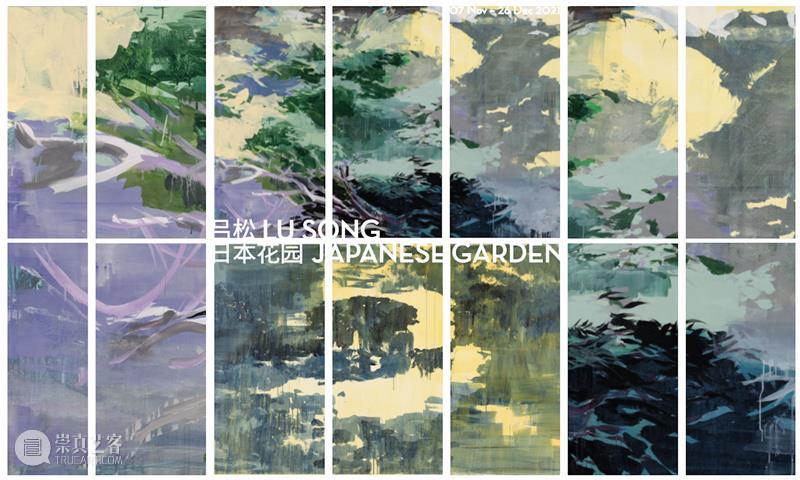
____________________________________

参观时间 | Opening Hours
周二 Tue-周六 Sat | 10AM-6PM
周日 Sun | 1PM-6PM
地址 | Address
上海市徐汇滨江龙腾大道2555-9号
2555-9 Longteng Avenue, West Bund, Shanghai
联系方式 | Contact
T: +86 21 6473 1533
E: info@dongallery.com.cn
ins: dongallery
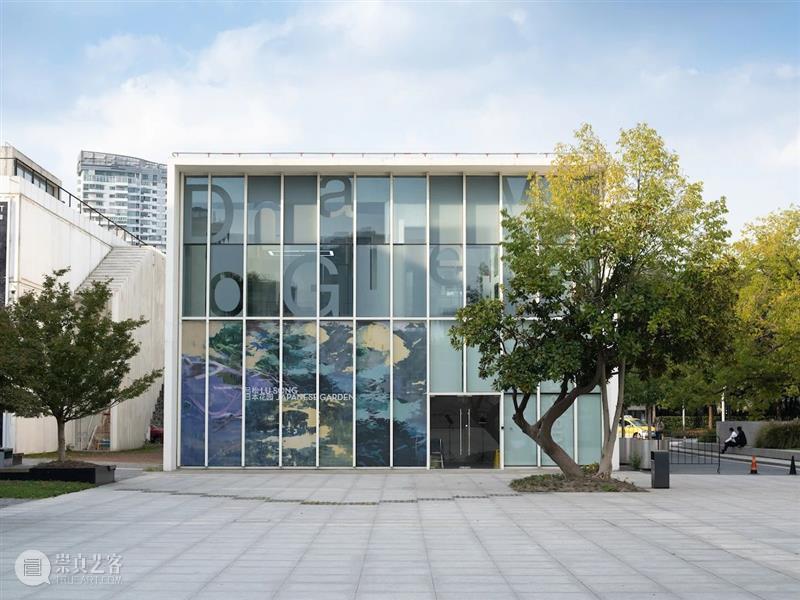


























 分享
分享